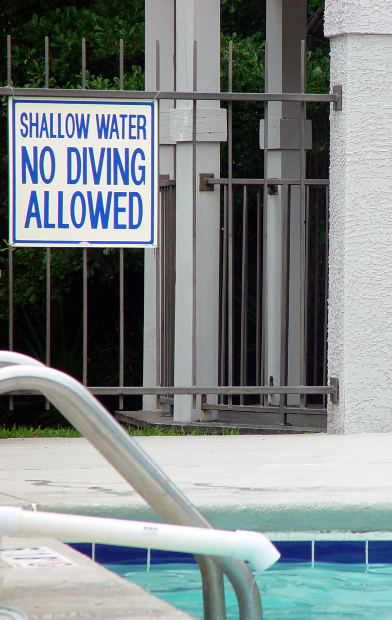A Maine toddler who was found floating face-down in his family’s swimming pool last Thursday is slowly improving.
Cody Campbell, 2, was unresponsive when he was pulled from the above-ground pool by his mother. He had a pulse, but no brain activity at the time of the accident according to emergency responders.
Campbell, who is recovering at Maine Medical Center has made progress and now recognizes his parents and is now talking, though he is having some difficulties with his speech. Police say that Cody was at home with his mother and siblings when he went missing and was found in the pool.
 Though the story did not end tragically, this situation serves as a reminder for parents to make keeping children safe around swimming pools a priority. According to the Center for Disease Control and Prevention (CDC), drowning accidents are the leading cause of injury death for young children ages 1 to 4, and the fifth leading cause of death for individuals of all ages.
Though the story did not end tragically, this situation serves as a reminder for parents to make keeping children safe around swimming pools a priority. According to the Center for Disease Control and Prevention (CDC), drowning accidents are the leading cause of injury death for young children ages 1 to 4, and the fifth leading cause of death for individuals of all ages.
Swimming pools pose the greatest risk for submersion injury or death by drowning to young children. Though the child may survive a near drowning experience, as was the case of Cody Campbell of Maine, nonfatal drowning may cause irreversible brain damage and long term disabilities, including memory problems, learning disabilities, and permanent loss of basic functions.
Who Is At Risk?
According to the CDC, rates of drowning incidents vary demographically by age, gender, and race. The highest rates are among those children ages 1 to 4, and typically males are at a greater risk for drowning than females. The biggest risk factor for drowning incidents is accessibility to water. Those who live close to bodies of water, those have a swimming pool, or those regularly visit a pool are generally more susceptible to pool-related incidents and drowning. Additionally, level of aquatic training and swimming strength are contributing risk factors.
How to Reduce the Risk of Pool Related Accidents
While swimming pools can be great sources of family fun and fitness, it’s important to take the proper safety precautions to prevent pool-related accidents from occurring.
Fencing
According the CDC, more than 50% of all drowning accidents involving small children could have been prevented by four-sided fencing that completely separates the pool from the house and rest of the yard. By general safety standards, a pool fence should be at least 4 feet high and have self-closing and self-latching gates that open outward. The latches should be out of the reach of children. A gate alarm that notifies you when a child has opened a gate is another option to consider if you have a pool in your own yard, especially if you have small children who are not yet trained to swim.
Portable or inflatable above-ground pools pose a significant drowning risk for small children particularly because of their flexibility: the side of the pool may collapse and cause a child to fall into the water and drown. These pools, though they may be temporary for the season, should be fenced in the same as in-ground or permanent above-ground pools
Swimming Lessons
Children can begin swimming lessons and water-safety skills training as early as age one. Formal swimming lessons can reduce the risk by as much as 88% for children ages 1 to 4. The CDC suggests that the decision to start swimming lessons should be based on the individual child’s exposure to water, emotional maturity, health concerns, and physical limitations.
Other Preventative Measures
Equipping children with life jackets or proper flotation devices while in the water is another way to prevent incidents. Make sure that children are wearing devices specific to their weight and size for maximum safety.
It goes without saying that the best way to prevent a child from a pool-related accident or drowning is constant supervision. Supervision is important even when there are lifeguards at the pool. Though they enhance the safety of the area, lifeguards cannot always safeguard or supervise all swimmers at all times. Adults who are supervising children in the pool should remain undistracted. Drowning can happen very suddenly and even silently.
 Boston Injury Lawyer Blog
Boston Injury Lawyer Blog









